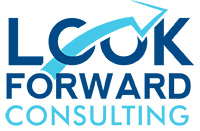 contact@lookforwardconsulting.com
|
contact@lookforwardconsulting.com
|
 +351 964 478 478
+351 964 478 478Class Registration
 Greetings from Las Vegas! I am attending the Scrum Gathering Las Vegas and wanted to provide a summary of useful ideas and concepts for the folks at home. If you have not attended a Scrum Gathering, seriously consider going next year. They are a great place to learn more about Scrum, improve your network and first time attendees receive a registration discount.
Greetings from Las Vegas! I am attending the Scrum Gathering Las Vegas and wanted to provide a summary of useful ideas and concepts for the folks at home. If you have not attended a Scrum Gathering, seriously consider going next year. They are a great place to learn more about Scrum, improve your network and first time attendees receive a registration discount.
I really enjoy attending the Scrum Gatherings because I get to reconnect with peers and colleagues, meet all the people who are working hard to get things done and learn about what are people doing to make Scrum work in their organizations. Another thing that is great about this conference, since it is pretty small (around 500 people) it is REAL easy to meet new people and start a conversation.
So these are the sessions I attended today:
Scrum: The Future of Work (Jeff Sutherland) – the conference began with the co-creator of Scrum, Jeff Sutherland, discussing why he feels that Scrum is beginning to change the way ALL of us work. According to Jeff, he believes one of the main reasons why Scrum is gaining popularity today is that “work sucks” – 55% of people are unhappy at work and 66% of people are actively seeking a new job. The current work paradigm is not working for people and they desperately want something more satisfying and fulfilling. Unfortunately, while why work sucks, a lot of Scrum out there in the field sucks, too. There was a lot in Jeff’s keynote, but I thought his advice directed executives and senior leaders would go a long way to making Scrum much more potent.
Removing Impediments with Drawings (Carlton Nettleton) – this was my session that brought the concepts from Dan Roam’s popular book, Back of the Napkin, to Scrum teams. The ability to explain your ideas with a picture is absolutely essential when working in Scrum. The are so many opportunities to use a drawing to help provide clarity, understanding and alignment. IMO, anyone can draw a picture since the power of a drawing does not originate from your artistic abilities, but from your strengths as a storyteller. My big insight from this session today was the ability to draw a picture allows us to persist and document a conversation so we may revisit it later.
Doing Scrum to Being Scrum: Transforming Culture (Brad Swanson) – I wanted to see what Brad had to share since he is engaged with the Scrum Alliance to help them learn how to apply and use Scrum. In this standing room only session, Brad discussed how he used John Kotter’s Eight-Step Process for Leading Change to assist a large global company change their culture from just doing Scrum practices to really understanding and acting on the Spirit of Scrum. From a consulting perspective, I found a lot of good ideas that I could use to help enable change in future organizations. One of the best parts of the session was when Brad asked the participants to stand-up and identify which of Kotter’s eight steps would be most difficult for their organizations. More than half the room were clustered around Step 3 (Developing a strategy & vision for change) and Step 4 (Communicating the strategy & vision for change). I definitely agree with this informal poll since most organizations do not spend time thinking through their vision for change and even less communicating it.
In late afternoon, I bounced back and forth between these two sessions since they were right next to one another.
Blueprint for the Future (Ron Jefferies & Chet Hendrickson) – when these two experts come together, something really unique and special happens and this session was no different. This presentation offered a number of topics that the two of them believed would be upcoming challenges to the future of Scrum. I was not able to capture everything, but these are the ones that I remembered.
Agile Antipatterns: The ScrumMaster’s Guide to Traps, Tripwires and Treachery (Adam Weisbart)- Adam is a new, Certified Scrum Trainer (he has got a HILARIOUS ScrumMaster video you GOT to see) and I was curious to see him in action. From this session on how to get eliminate and avoid these behaviors, I wrote down these three key points:
